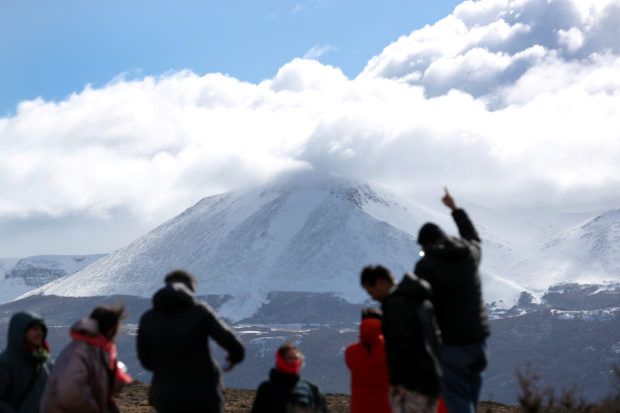Research center in Chile’s Cape Horn serves as climate change ‘sentinel’

Scientists and media members gather in the field at Navarino island in front of Beagle channel, Cabo de Hornos area, Magallanes and Chilean Antarctic Region, in Puerto Williams town, Chile, September 24, 2022. REUTERS
SANTIAGO — Located at the tip of South America, where the Pacific and Atlantic oceans meet, Cape Horn in Chile is the closest land mass to Antarctica and home to a unique ecosystem that scientists say is a natural laboratory to study climate change.
Ricardo Rozzi, director of the almost-completed Cape Horn International Center (CHIC), said the area has at least 10 features – including the world’s southernmost forest – which make the Cape Horn Biosphere Reserve ideal to monitor plant and animal life on a warming planet.
“[Organisms] in the north are coming south, but what happens to the ones here in the south? Do they vanish? Do they not vanish?” Rozzi said. “That’s the primary function of the center, to be a ‘sentinel’ for climate change.”
Aside from researching the under-studied subantarctic region, Rozzi said the center will observe plant and animal life, glacier retreat and give recommendations to the state for preservation and sustainable tourism.
Preserving the region is essential, scientists say, because its pristine ecosystems give it a unique vantage point to measure global alterations that result from human action or presence.
Article continues after this advertisement“We can study the effects of global changes here, because there aren’t any big changes yet,” said Andres Mansilla, a professor at Magallanes University and researcher at CHIC.
Article continues after this advertisement“So it’s a great opportunity for us to use pristine ecosystems that haven’t been interfered with, to see how climate change is affecting them.”
The CHIC is 90% complete and will be inaugurated in November. The research center spans 2,582 square meters, cost about $16 million and will host a visitor and education center in addition to its research facilities.
RELATED STORIES
Chilean scientists study climate change at ‘end of the world’
Chile creates national park to save glaciers